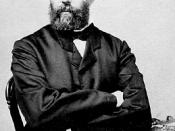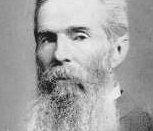2de lic. Germaanse Letterkunde
Moby Dick Course
"A man can be honest in any sort of skin"
The representation of the racial Other
In Herman Melville's Moby Dick
Year 2006-2007
Melville lived in a time of great political turmoil. American and European missionary work and military expansion, the near extinction of Native American tribes, and the issue of slavery were causing a lot of debate about racial identity, character, and human rights (Otter 2). To justify their treatment of these peoples and exculpate their own actions, the Americans in Melville's time that supported slavery called upon the superiority of the white Anglo-Saxon race over all other inferior races.
This idea was propagated in politics, literature and popular culture, and defended by means of science and religion. Intellectuals believed that the history of mankind was one of advancement, moving in different speeds at different places and sometimes skipping certain peoples.
The cause for this was unknown, and it was therefore assumed that certain races (especially the white race) were equipped for advancements while others were not (Otter 2). There was an explosion of studies - most of which can be linked "American school" of ethnology (Delbanco 49-50) - that tried to prove this in a pseudo-scientific way. Scientists went on an obsessive search for physical evidence of the separate and unequal capabilities of different races (Otter 2-3) in order to rank them hierarchically and articulate a national order. Their studies focused on the shape of the head (phrenology), size of the skull (craniometry), facial features (physiognomy) and skin colour. These differences among races in colour and shape where then associated with corresponding mental and moral differences. Based on these physical criteria, the human species was distributed among five races - American Indian, Caucasian, Mongolian, Ethiopian and Malay - and placed...


